In the northwestern suburban district of Baoding known as Mancheng (满城区; Pinyin: Mànchéng Qū) is Mausoleum Hill (陵山), a triple-peaked foothill of the eastern edge of the Taihang mountains.
Baoding was an important strategic location during the Jin and Yuan dynasties, defending the capital from the south. About 800 years later, it was still considered a strategic location, so in 1968 a construction unit from the People’s Liberation Army was deployed to dig secret anti-aircraft positions into the sides of the hill. On 22 May 1968, when the PLA, having tunnelled 50 metres into the east side of the central peak, set off another blast, the sound of the explosion was dull and echoed.
When the dust had cleared, they found that they had blasted their way into a cave filled with pottery vessels, decaying wood, lumps of stones, and pieces of bones. Two days later archaeologists were sent to investigate, and they confirmed that the PLA had blasted into the side chamber of an ancient tomb dug into the mountainside.
The following month Chairman Mao and Zhou Enlai were informed of this important archaeological discovery, and Zhou Enlai approved its excavation. Exactly two months after its discovery, on 22 July, Guo Moruo, as President of the University of Science and Technology of China, paid a visit to the site, and archaeologists were able to confirm that this was a Western Han tomb belonging to Liu Sheng 劉勝, Prince Jing of Zhongshan (died 113 BC). Sometime later, the tomb of Liu Sheng’s wife, Dou Wan 竇綰, was discovered 120 m to the north. Neither tomb had been robbed, and many precious goods were discovered in the tombs, including jade burial suits for the prince and his consort.
This is one of the most important archaeological sites relating to the Western Han imperial family.
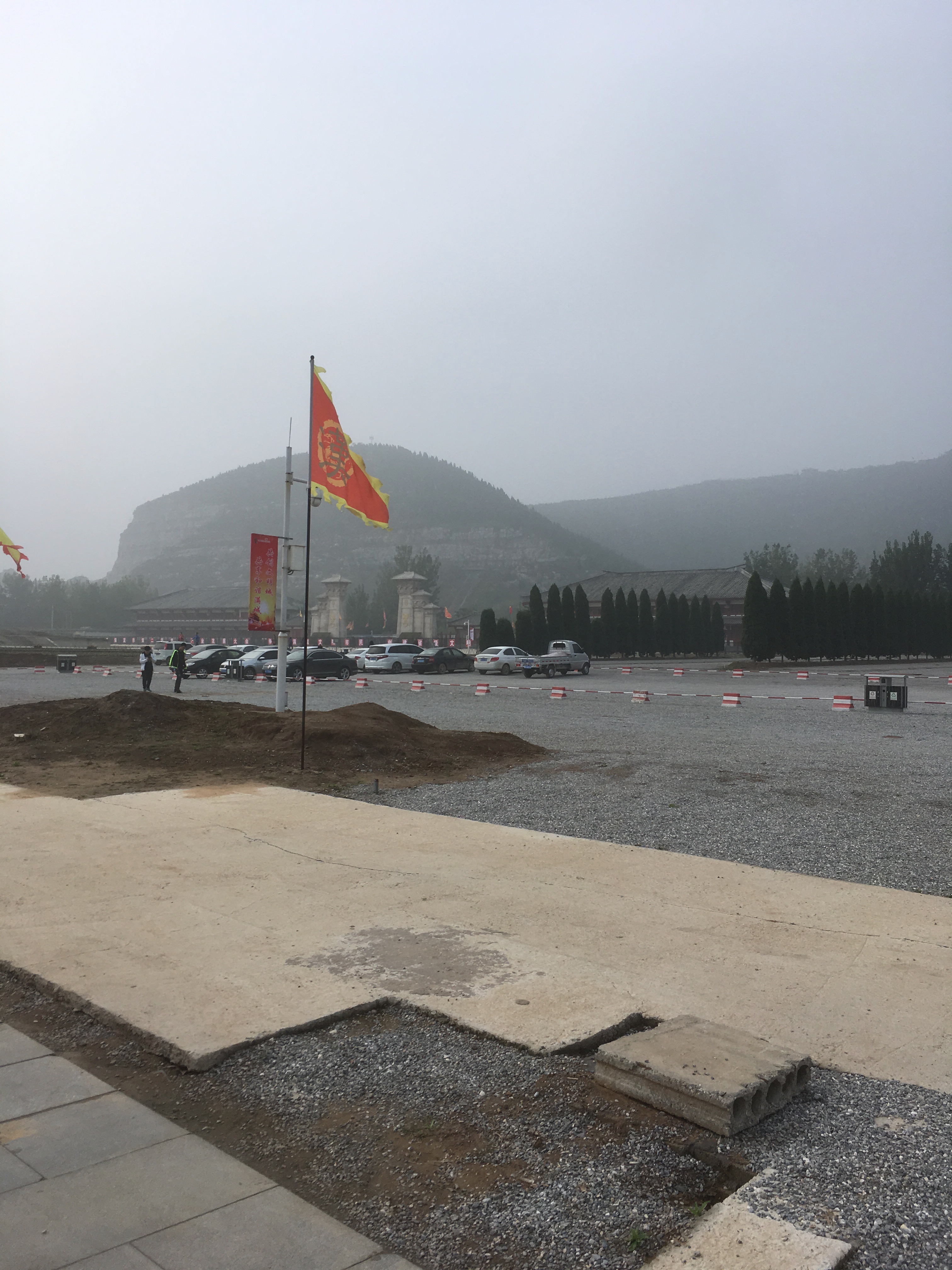




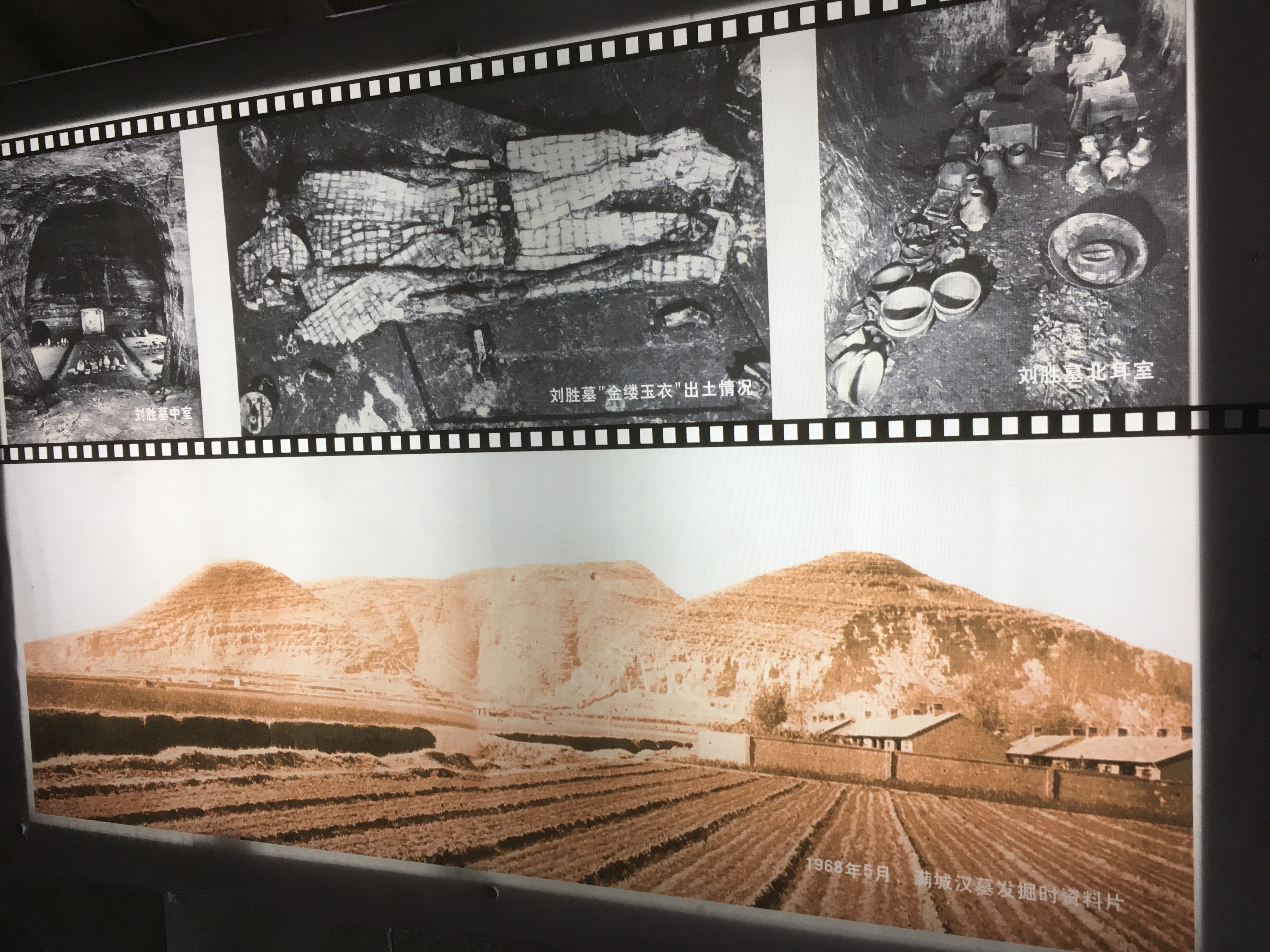






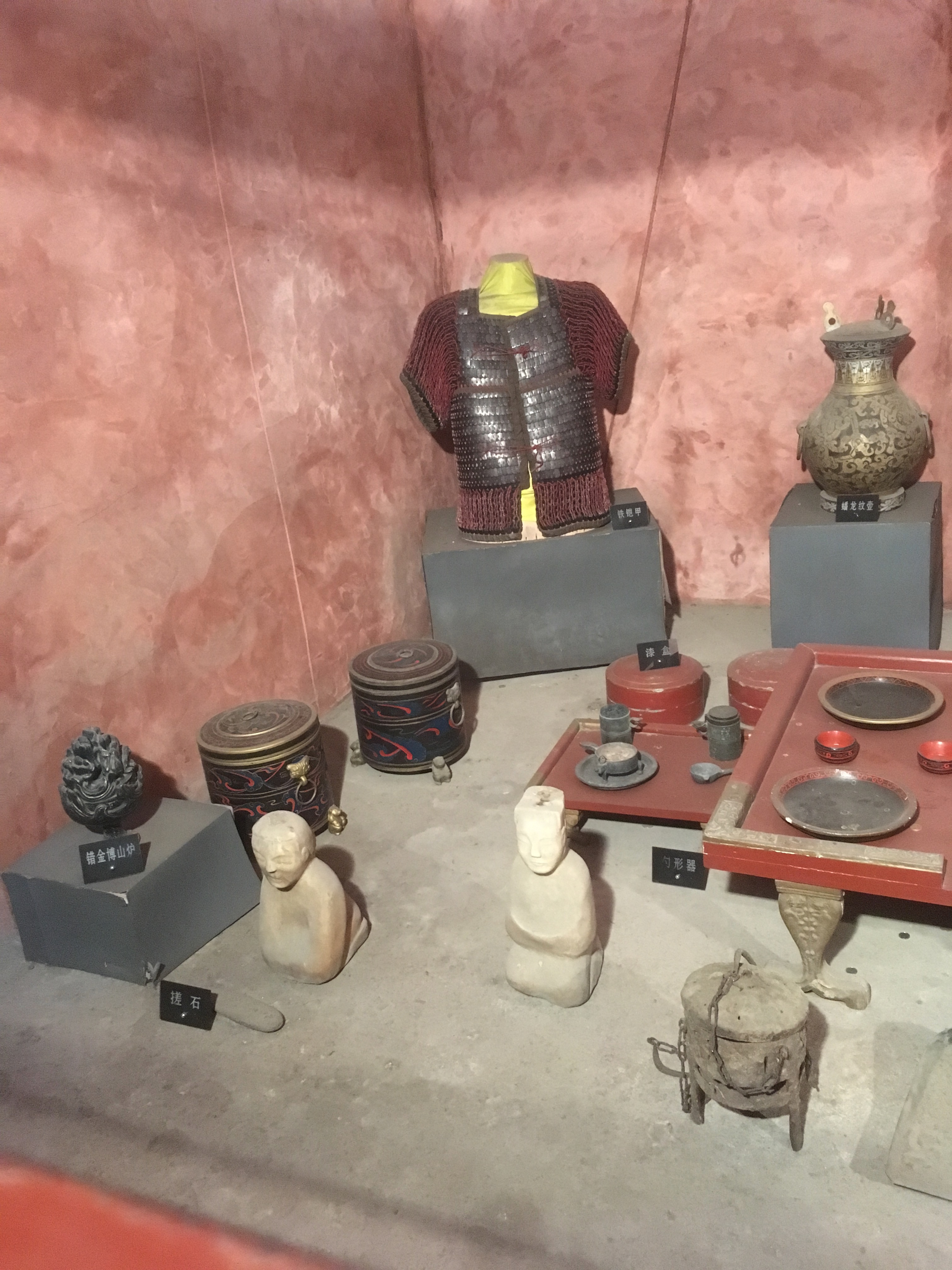



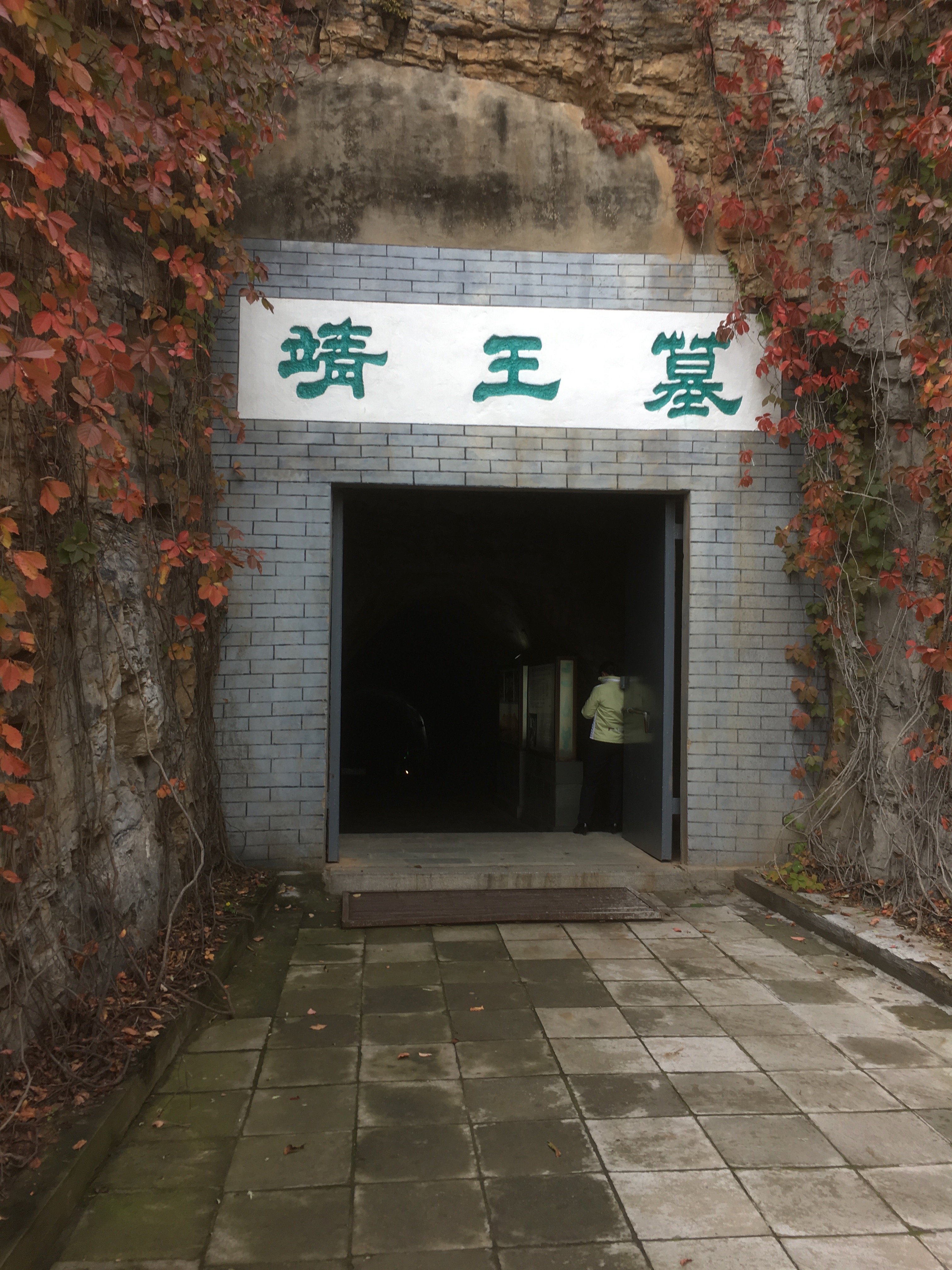
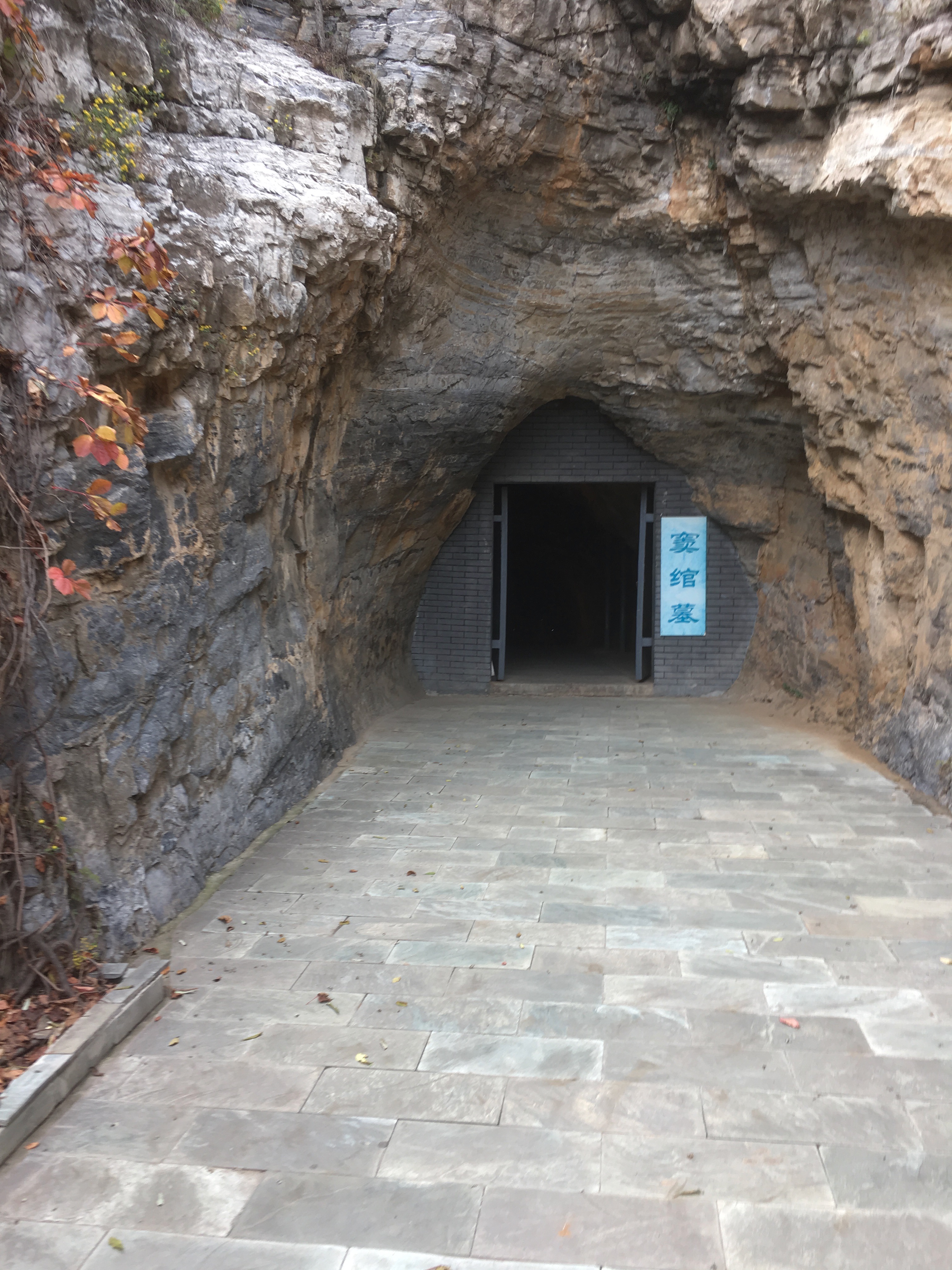





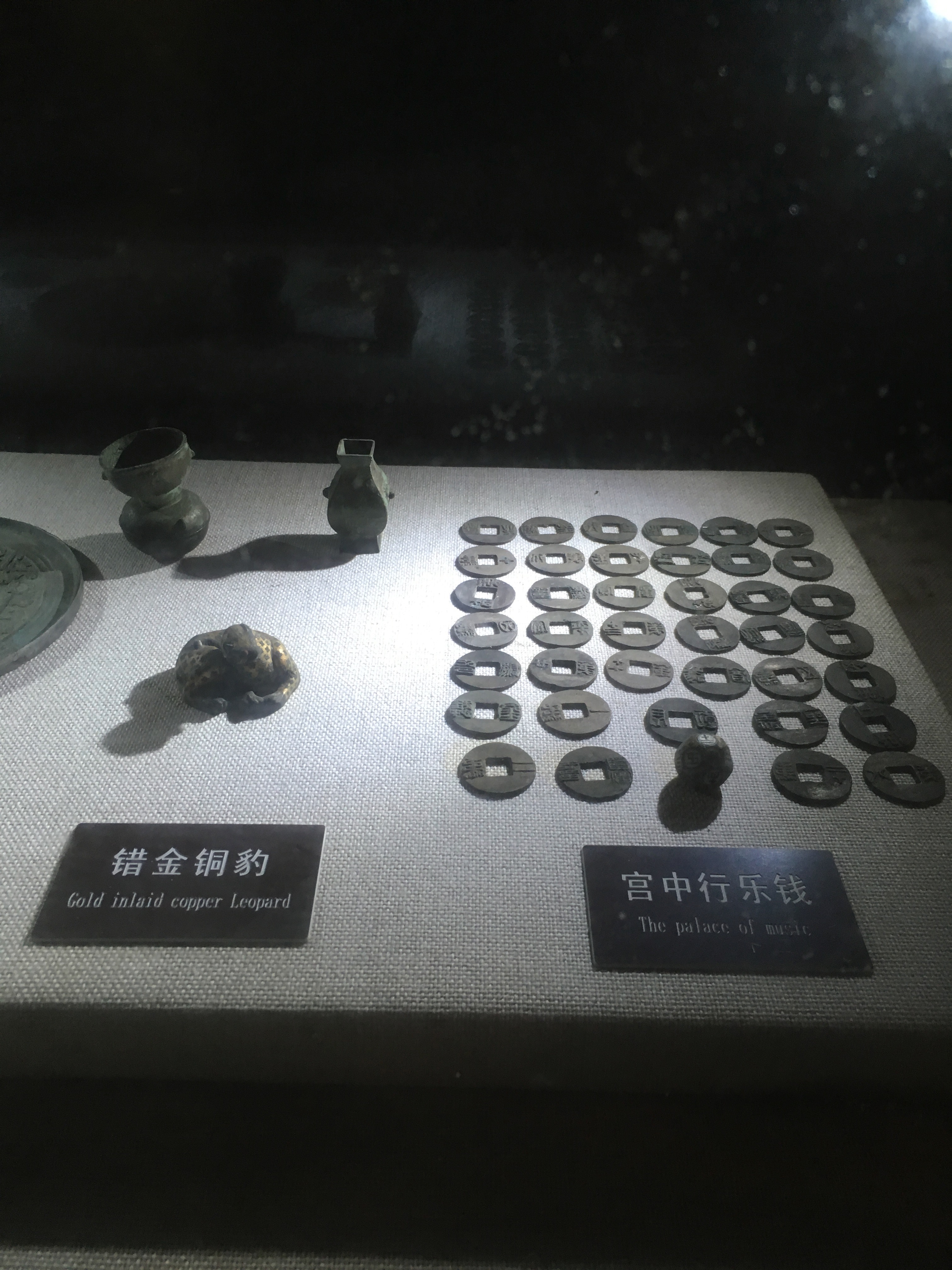
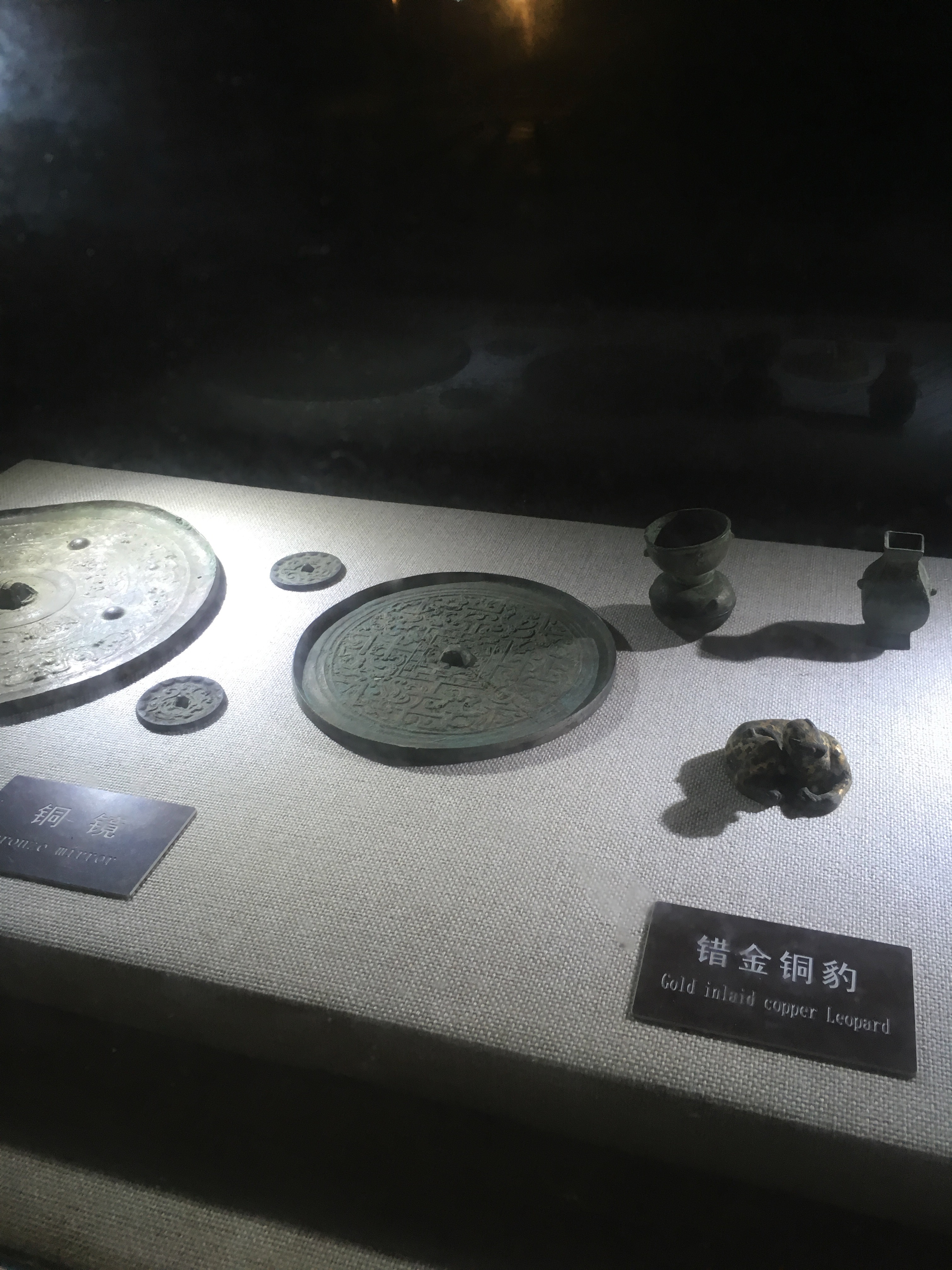













Most (maybe all) artefacts on site now are reproductions, as the extremely valuable originals are in museums in Beijing and elsewhere.
One of the interesting finds is a collection of game tokens and an 18-sided die, which were used for a drinking game.
Sixteen of the die’s faces are inlaid with the numbers one to sixteen, and the top and bottom faces are inlaid with the characters “驕” (“proud/arrogant”) and “來酒” (“bring wine”). A similar 18-sided die found in the Han tomb at Mawangdui has the characters “驕” and “畏妻” (“be afraid of your wife”) on the top and bottom faces. The die was used for a drinking game together with the coin-shaped bronze tokens.
Ascent of the tree-covered hill – no good views – is by walking (steep, but steps) or cable car, but there is a third way down: by rail sled.



